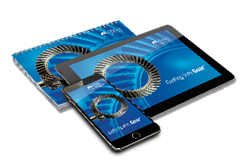How do synchronisers work?
The purpose of a synchroniser is to simplify the gear change process and to prevent the need for ‘double de-clutching’.
A synchroniser is a ring device that is placed between the driving gear and the synchroniser hub and acts through friction to equalise the speeds of the main shaft and the desired drive gear.
The animation below shows an exploded view of a synchroniser assembly system.
To engage a gear smoothly the clutch between engine and transmission has to be opened. This allows the input shaft and the selected gear to be brought to the same speed. This is the purpose of the synchroniser ring, which uses friction to equalise the speeds of the synchroniser hub and the gear. As soon as the speeds of the hub and gear are equal, full engagement can occur, the clutch can be closed again, and power can flow to the output shaft.
The animation below shows the role of a simplified synchroniser within a transmission.
Traditionally synchronisers were made from brass but as transmissions have become more complex and are expected to perform for much longer periods the synchroniser materials have become more specific.
Friction materials have been added to the rings to improve wear and synchronisation performance and sintered metal, molybdenum and carbon are commonplace in today’s transmissions.
It is not unusual for several of these materials to be used within one transmission.
This means the frictional properties of manual transmission fluids are becoming increasingly important. The fluid must be specifically designed to synchronise smoothly with each friction material for the lifetime of the transmission.
Afton develops, manufactures, blends and delivers leading edge additive technology for fuels and lubricants around the world. Our products provide the chemistry that makes fuels burn cleaner, engines run smoother and machines last longer.
The Afton range of gear additives are formulated to meet these increasingly complex manual transmission designs and severe operating conditions. In addition, our portfolio encompasses a variety of customer needs including bespoke and marketable claims, field performance demonstration, base stock compatibility, and cost efficiency requirements to name a few. They meet the very latest performance requirements for extended drain, fuel economy and temperature stability.
 All this information is now available to you on your iPhone and iPad, via our app! This is the first digital edition of the Getting into Gear™ book and has been designed as an interactive reference tool for our oil company partners, our distributors, OEMs and our own staff. Indeed, it is for anyone Getting into Gear™.
All this information is now available to you on your iPhone and iPad, via our app! This is the first digital edition of the Getting into Gear™ book and has been designed as an interactive reference tool for our oil company partners, our distributors, OEMs and our own staff. Indeed, it is for anyone Getting into Gear™.It includes other detailed animations and gives readers access to a wealth of information covering the different types of gears, applications, market trends in hardware and fluids, and the additives and specifications for manual transmissions and axles.
Complete the form below to request a printed copy of the Getting into Gear™ Book.